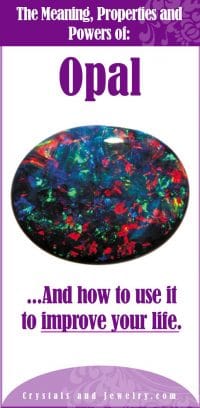

Mexico also supplied its empires with the stone. Hungary mined the stone for the Middle East and Europe in the old world. As time progressed, communities associated precious stones with a symbol of wealth to their owners. As the early man found the stones and other minerals around them, they slowly learned to turn them into decorative shapes. Such discoveries continue to emerge historically. Louis Leakey, an anthropologist from Kenya, was the first person to discover the earliest known opal artefacts dating back to around 4000 BC. Wax variant: has a yellow to brown colour and waxy luster.Moss variant: This variant that looks like a moss plant.Crystal variant: A transparent and semitransparent precious stone with the most amazing play of colour.The black variant: The most precious that comes in darker colour variations such as dark blue, dark grey, dark green, with black being the most valuable.The Banded variant: Formed with colour bands.Andean variant: Mined in the Andes Mountain in Peru.It is both transparent and translucent, with vivid colours of yellow, orange, and red. Lastly, the fire variant imitates fire colours, hence its name. It comes with a milky lustre and does not show a play of colours. On the other hand, the common variant can be easily located worldwide. The internal structure of this precious variant causes it to diffract light which produces its play of colours. The precious type is known for its ray of colours, hence mostly referred to as the rainbow variant. Each of these crystals contains different characteristics. There are three significant types of this stone: precious, common, and fire. It’s generally said to help you get rid of the undesired emotions that often bother you. When it picks up negative thoughts and emotions, it makes them easier to understand and fix.

This precious stone is also believed to pick up a person’s thoughts, feelings, desires, and wishes and amplify them. In addition to its beauty, the stone is widely known to bring out a person’s positive traits and characteristics to the surface.

The stone is an enigma of light, purity, and mystical play. These colours mainly depend on the conditions in which it formed the crystal the stone may be transparent, translucent, or even opaque. When the crystals are passed near a beam of light, more colours are likely to emerge. The crytals in this stone contain various colours such as white, colourless, red, white, orange, green, brown, black, pink, and blue. It’s one of the most colourful gemstones globally and has been used since ancient times for its evident beauty, and some people even believe it contains healing powers. You can commonly find it in limestone, sandstone, rhyolite, marl, and basalt. The stone mainly occurs in fissures of almost all kinds of rocks. Due to its amorphous nature, the stone is characterised as a mineraloid, unlike crystalline forms of silica, which are viewed as minerals. This forms spheres that are tightly packed together. It formed when the water runs into the cracks of the earth, collecting silica sands along its journey. The name Opal originates from “opalus”, meaning a “precious stone.” The gem is formed from rich silica waters. Have you ever wondered why most people spend a lot of money on an opal stone purchase ? The answer lies in the huge number of advantages the stone is believed to offer.


 0 kommentar(er)
0 kommentar(er)
